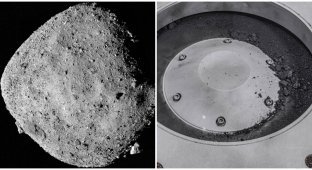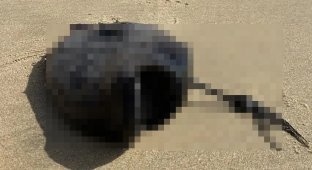10 interesting facts about asteroids in the solar system (19 photos)
In science fiction movies, flying through the asteroid belt is always very dangerous. It's difficult to maneuver the spaceship and get through this obstacle course without colliding. In fact, asteroid belts are so large that the density is low. All the asteroids are located very far from each other, and flying through the belt is not difficult at all. 
The main asteroid belt in the solar system is located between Mars and Jupiter. If you add up all the asteroids here, you get only 4% of the Moon's mass. There are several million of them here, most of them are only a few meters in diameter.
They are so dispersed that not a single spacecraft that has crossed the asteroid belt has ever collided with them.
Life on a rock. Scientists regularly find organic matter on asteroids. For example, sugars and amino acids.
Scientists have studied regolith from the asteroid Bennu. It turned out to be rich in carbons and scientists discovered several types of sugars, in particular ribose, arabinose and xylose. 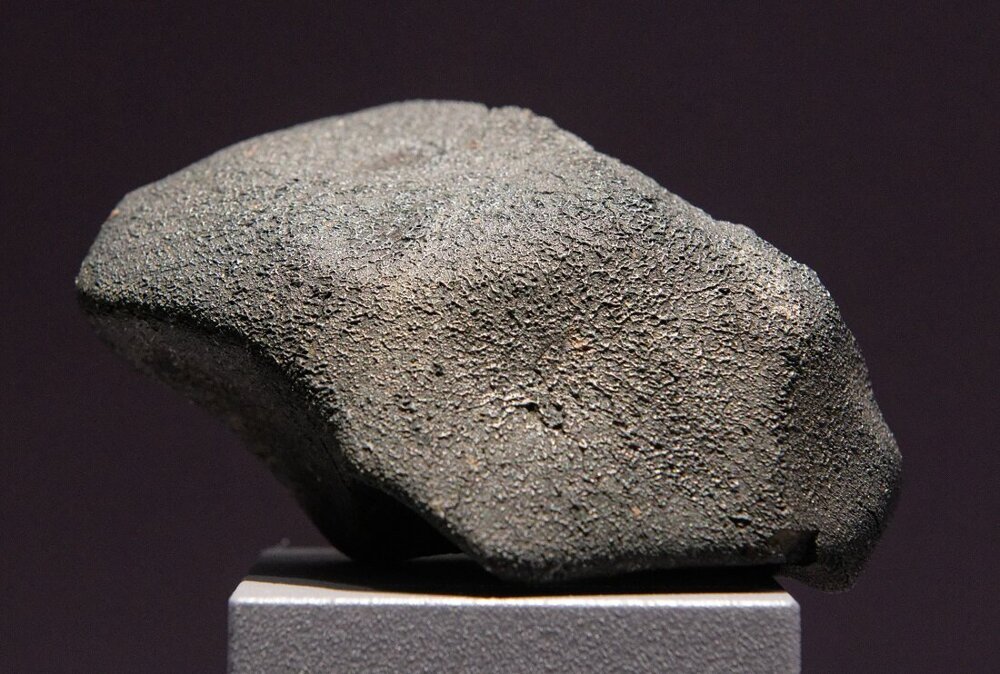
Murchison meteorite
And such discoveries are made regularly. For example, in the Murchison meteorite, which fell to Earth in 1969, scientists discovered organic compounds that are 3 billion years older than our planet. So organic matter in space is by no means uncommon!
RNA in asteroids. But ordinary organic matter is far from the limit of what can be found in asteroids. They also contain more complex materials that are the forerunners of living organisms.
Japanese scientists found vitamin B3 and uracil in soil samples from the Ryugu asteroid.
Uracil is one of four nucleotides that fold into an RNA molecule. And vitamin B3 plays an important role in metabolic processes. 
According to modern scientific ideas, the main hypothesis about the origin of life on Earth is the so-called RNA World. An important stage before the emergence of life was the period when RNA molecules dominated the world. They did not yet represent a full-fledged life, but they were already accumulating information and mutations. This RNA World was the predecessor of life on Earth. This hypothesis has the most evidence in the 21st century so far. 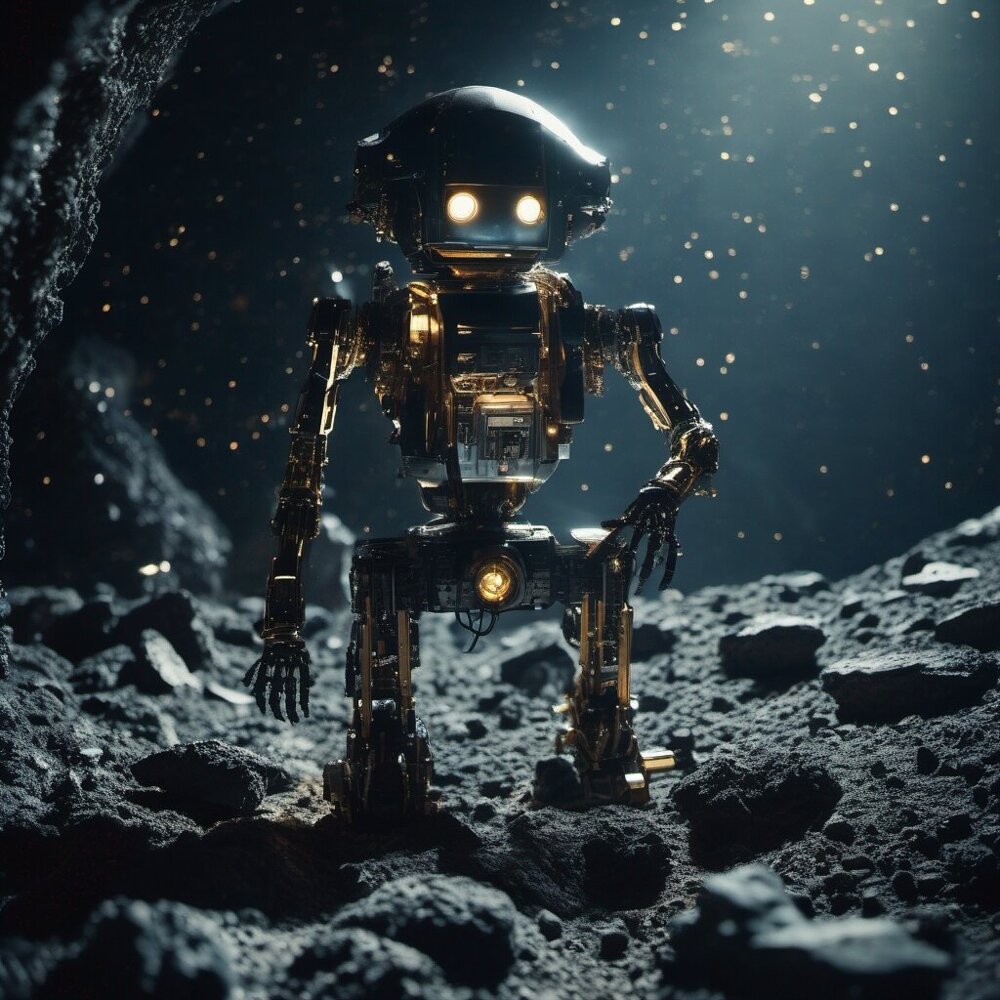
Robots will first be involved in the development of asteroids and the extraction of minerals on their surface
RNA molecules are able to exist autonomously and catalyze metabolic processes. Which eventually led to the appearance of the first life. So the building blocks of life could have come to Earth from space.
Meteorite and asteroid: what is the difference. Asteroids are small celestial bodies that do not reach the size of planets. A real planet must have enough mass and gravity to form a spherical shape. Asteroids do not have enough mass, which is why they take the form of boulders. 
And meteorites are celestial bodies that fell to Earth. That's the whole difference!
The most beautiful. The Fukang meteorite was discovered in 2000 near the city of Fukang in northwestern China. It has a specific structure that is found in less than 1% of meteorites. 
This type of meteorite is called a pallasite. Their base is iron-nickel. And there are inclusions of olivine crystals, which give it a unique appearance. Green olivine is a semi-precious peridot stone. 
Usually there is not much olivine in such meteorites, but in Fukan this stone forms the basis. 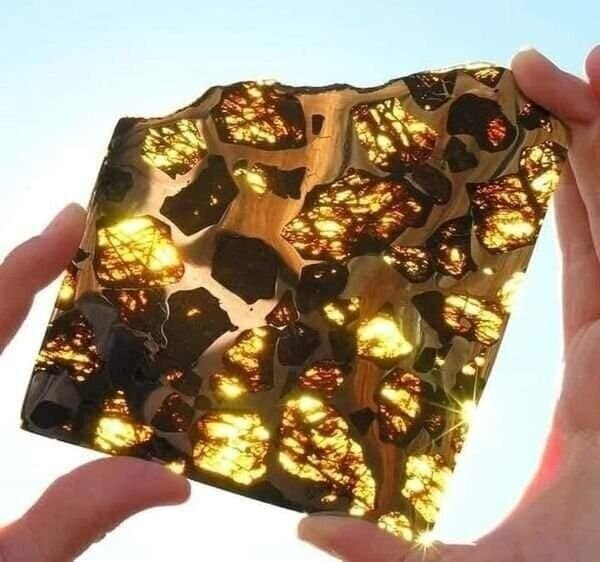
Fukan weighs 1003 kg. Pieces are regularly cut off from this meteorite and sent for research. Parts of it are on display in various museums.
Why is there no big rock in the center of lunar craters? Where do asteroids disappear? The question is logical. Imagine, asteroids crash into the surface of the Moon with great speed, leave a giant crater (well, or a small one, depending on their size) and... disappear without a trace. What happens to them? 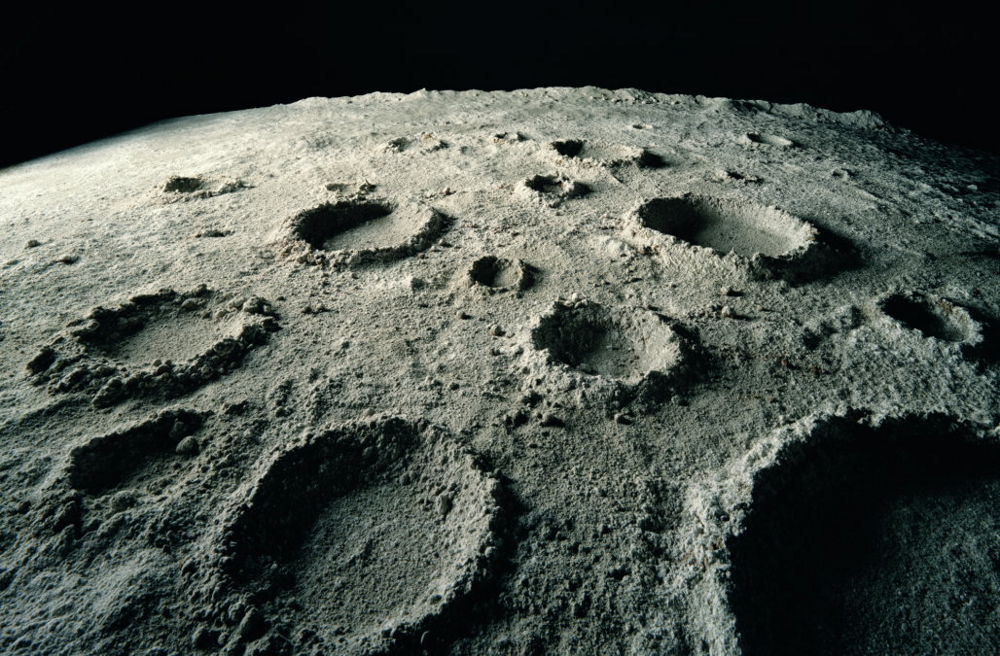
When an asteroid hits the Moon, its momentum isis converted into heat. This temperature is usually enough to vaporize the asteroid or break it into many small fragments. Over time, the fragments are covered with lunar dust and the surface becomes relatively smooth. 
Fiery Leonids. The meteor shower that struck Earth on November 12, 1833 was caused by the Leonid asteroids. 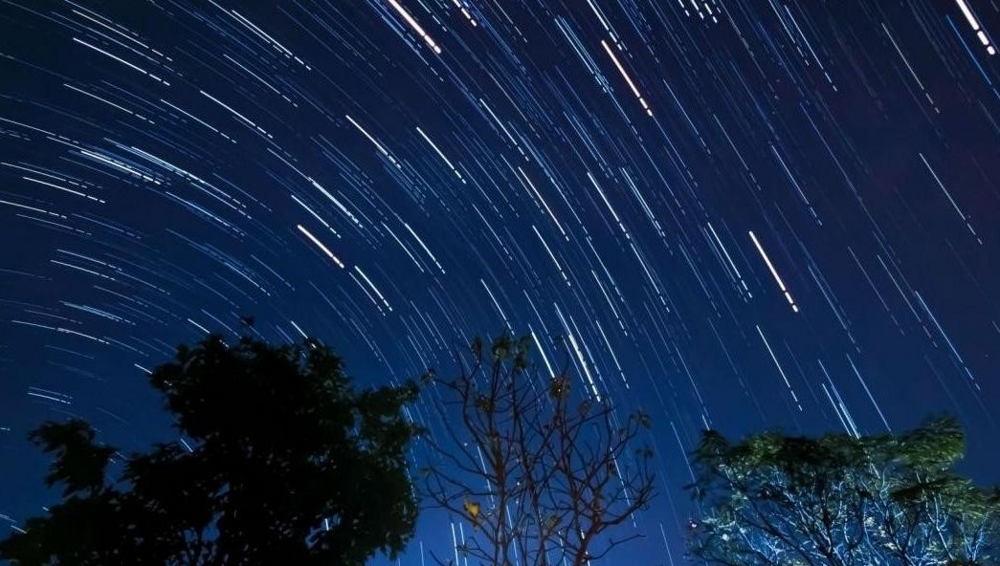
Millions of luminous trails resembling fireballs conquered the skies, causing people of that time to fear the coming of Judgment Day. 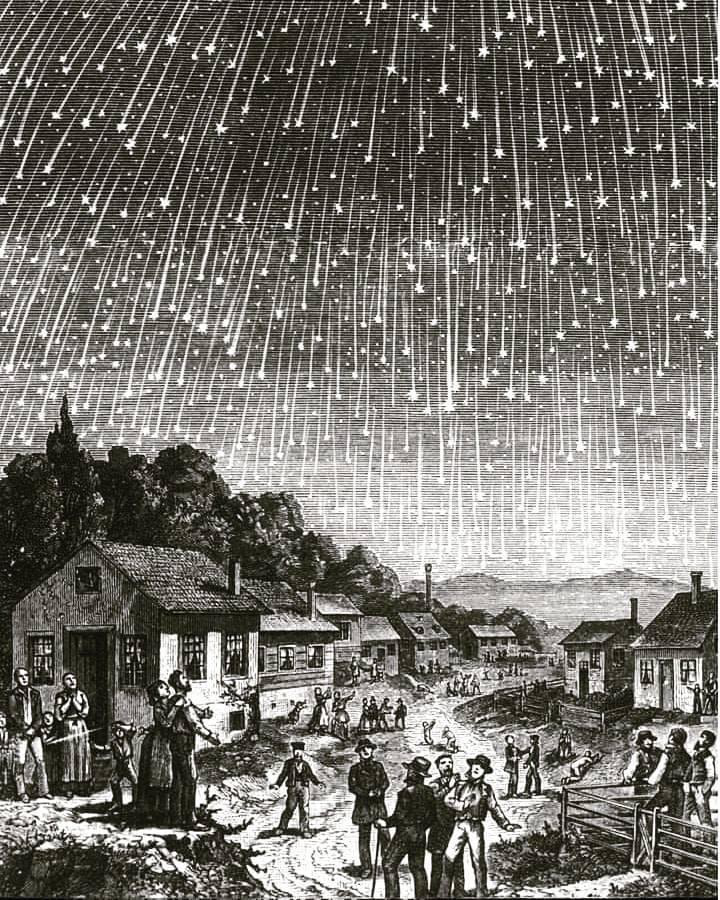
Eyewitnesses recalled that there were only half as many “fireballs” in the sky as falling snowflakes during an average snowfall.
A meteorite fell directly into a woman's bed. One night, Canadian Ruth Hamilton jumped up suddenly from a powerful crash. Something broke through the roof and showered it with splinters. The woman was very lucky - she miraculously escaped the impact of a meteorite, which broke through the roof of her house and fell on her pillow. 
Ruth jumped out of bed and turned on the light. And, to my surprise, I saw a stone lying right between the pillows. A few centimeters from where her head was.
But there was also a more extreme case. In 1954, a meteorite weighing 3.8 kg fell on the house of American Anne Elizabeth Hodges. 
The stone hit the radio, bounced off and hit the girl. She had severe bruises. It left a large bruise over a third of her body on her side, and she spent several months recovering.
Dangerous?! Yes, but not the ones we think. Huge meteorites have fallen to Earth more than once. This happens rarely by human standards, but regularly by cosmic standards. For example, this is what the meteorite crater that destroyed the dinosaurs looks like: 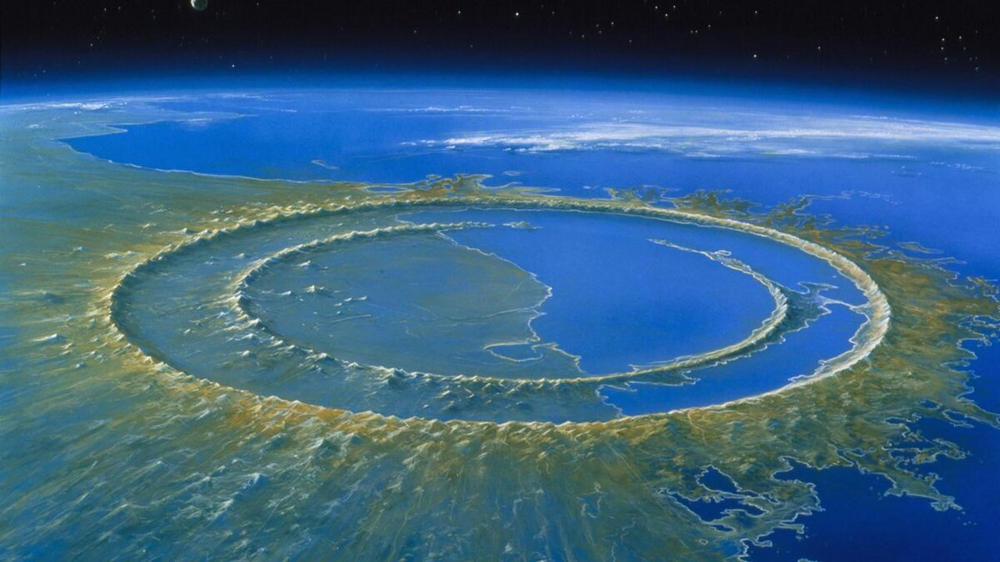
Crater from the Chicxulub meteorite that destroyed the dinosaurs - view from space
And such extinctions, apparently, happened regularly on our planet.
Various methods are now being developed to combat such meteorites. But at the moment we do not have a 100% method of how to get rid of such a threat.
To do this, it is important to learn about a potential collision several years before the meteorite falls. If at this moment you move the asteroid even a little, it will fly past. Humanity can prepare by knocking him off course from afar. The vast majority of asteroids are tracked by scientists and will be able to predict impact threats in advance. 
But incoming asteroids pose a serious danger. If they fly from the outside, and even from the direction of the Sun, so that we do not see them. And then we will have no time to prepare at all. On the other hand, the probability of such an event, when an incoming celestial body will also definitely hit the Earth, is practically zero.
Asteroid colonization is no joke! Researchers from the University of Rochester have proposed building the first extraterrestrial colony inside an asteroid. 
This will open new horizons in the development of human civilization!
The leading candidate is the metal-rich and fairly large asteroid 16 Psyche. Here you can mine valuable rare earth metals. 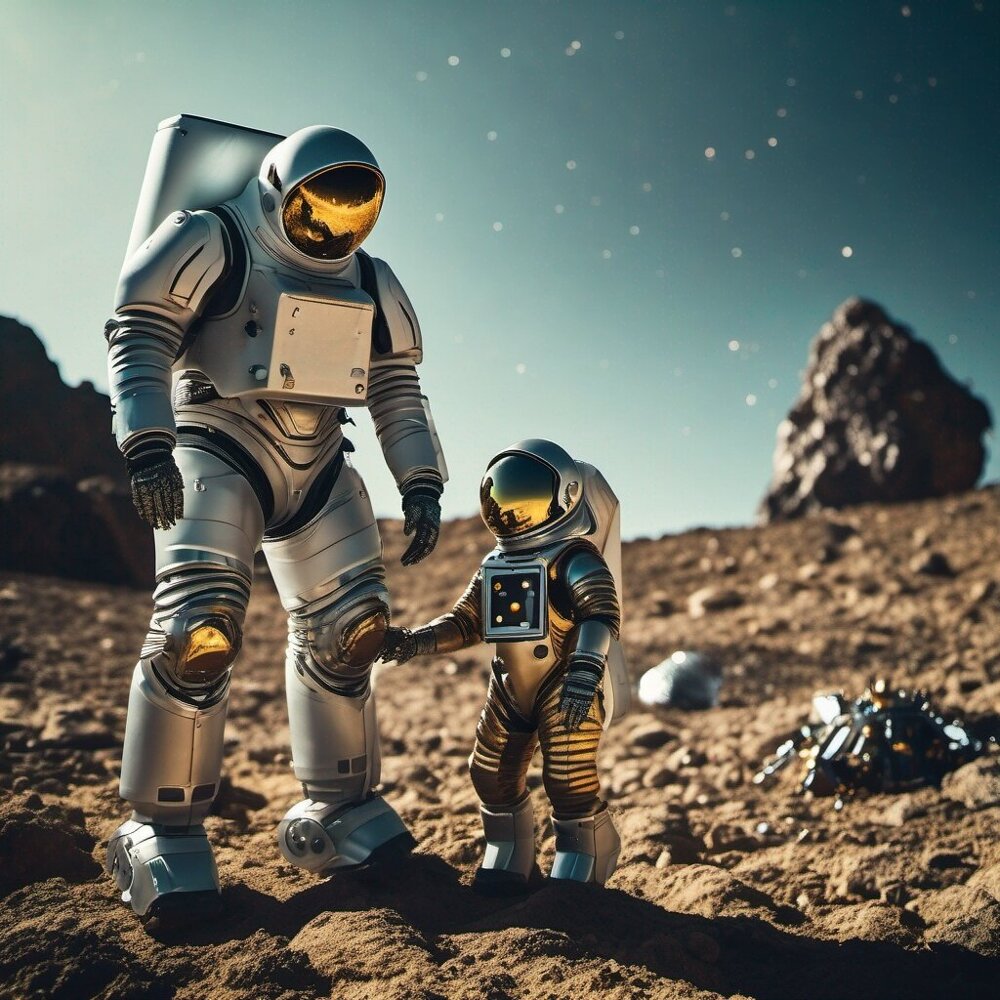
In fact, there is nothing fantastic in such a project. The asteroid will be inhabited, first of all, by robots.
Asteroids can be driven to the so-called Lagrange point. This is the point at which the effects of lunar and earth gravity will be the same. And the meteorite will fly along with our planet at a convenient access point. 
This will solve the problem of valuable resources important for the development of high technologies.
No one is seriously planning to live on the colony. This is needed to extract resources. Many asteroids are so stuffed with them that their value exceeds world GDP by thousands of years.














